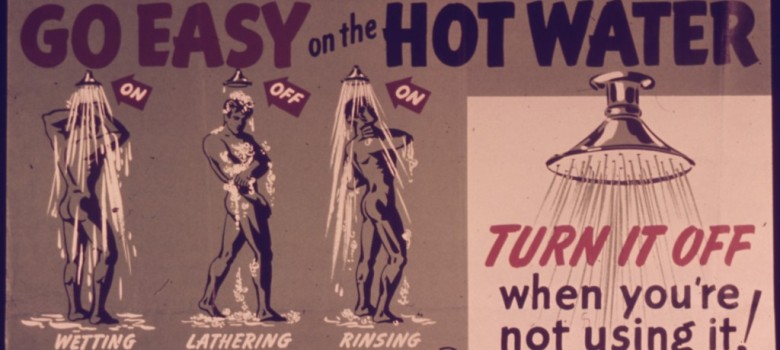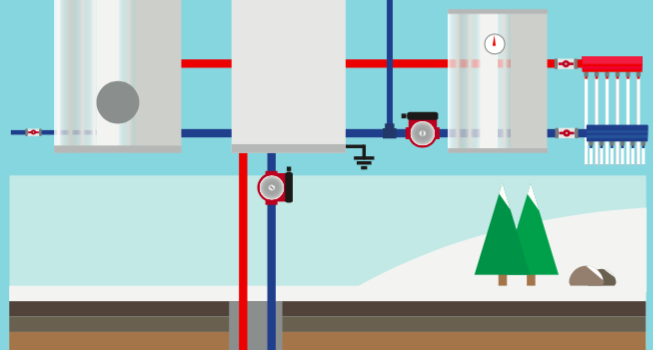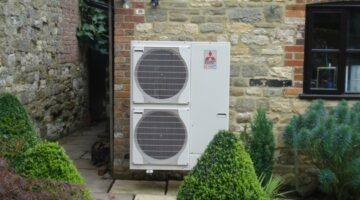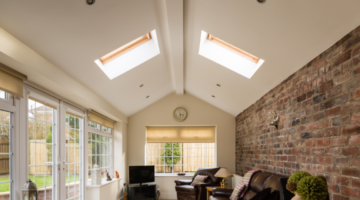
What are the best ways to heat your domestic hot water in electric only homes?
We often get ask the best ways to heat your water when there is only electricity in the home (i.e. no gas boiler). Heating hot water for washing / cleaning accounts for the second highest energy consumption in the home after heating, so it is worth getting right in order to maximise energy savings. Obviously, if you are on-gas then the options are pretty straightforward. A gas boiler can heat your hot water pretty cheaply and either store it in a hot water tank or deliver it straight to the required tap. However, when it comes to electricity the options aren’t quite as simple.
The main reason for this is that electricity is fairly expensive, coming in at around 13p/kWh as opposed to 3p/kWh for gas. This means that not only does it cost 4 times to produce hot water using electricity, if you waste the hot water, the cost of this wastage is also quadrupled. The good news is that there are several options available to you if you are forced to heat your water with electricity, so lets take a look at the options.
With electricity, the cheapest way to heat your water is through renewables. This includes heat pumps, solar thermal systems and solar panels (through solar PV optimisers/diverters). Although the heating of the water is extremely cheap, if not free, from these systems, the install cost is obviously high.
Heating your water with heat pumps
Heat pumps run just like a wet central heating system, except they only require 1 unit of electricity for around 3 units of heat. The resulting hot water is then stored in an insulated water tank to minimise heat loss. The result of this increased efficiency means that the cost of heating the hot water comes down to around the same cost as if it were a gas boiler. If you were on oil or bottled gas, these suddenly become a very attractive option.
So while heat pumps are relatively expensive to install, there high efficiency makes them relatively cheap to run.

For Solar Thermal systems, the power of the sun heats up water through panels or evacuated tubes on you roof. This warm (not boiling) water is then sent to the hot water tank, where it then needs to be topped up by your primary heating source, either an electric immersion heater or your electric boiler. While just heating your water with electric is expensive, the water has already been heated a lot, so the amount of electricity required to run the immersion / electric boiler to top up the temperature is actually very small.
It is quite expensive to install & doesn’t provide all of your hot water, but it is free to run and will save you money for many years.
How to heat your water with solar panels
While Solar PV Panels do not directly provide heat, the surplus electricity that they generate can be sent into the immersion heater, via a Solar PV optimiser/diverter, to heat your water in the storage tank for free. The important factors to consider are that throughout winter, or on cloudy days, the surplus is limited and so the water may not be heated to the required temperature. This would then require a top up from the main heating element. The benefit of a Solar PV optimiser/diverter is that it only uses the electricity that would otherwise be sent back to the grid – but ensuring you still get paid the usual 50% of generation as export.
Expensive to install & may not provide all of your hot water, but PV has the added bonus of producing electricity for other parts of your home, and will pay back fairly quickly when you take into account government feed in tariffs.
Instantaneous water heating
Instantaneous water heating comes from small electrically powered units that heat water instantly as it passes through the system. While this is great because there is no wastage from heat loss through storage, there are drawbacks with water pressure. For example, a standard domestic unit can only provide water flow of around 6 litres per minute. As they do not have a storage unit, they can’t benefit from renewables or a dual tariff electricity supply.
Cheap to install, these units can prove expensive to run in certain scenarios, and they can suffer from water pressure issues.
Hot water via the immersion
Water heated solely through electric immersion heaters are often found in properties that take advantage of a dual tariff electricity supply. So they can store the hot water heated from the low tariff in a well insulation hot water tank, to be used throughout the period of higher tariff, usually 07:00 to 24:00. If this is the method of heating, then you need to make sure that the tank is well insulated with a cylinder thermostat to ensure no unnecessary heating takes place.
Most people already have a tank with an immersion heater, but install costs if you don;t are considerable. Dual tariffs are gradually being fazed out in favour of time of use tariffs, but there is likely always going to be a place for the humble immersion heater in our homes.
Heating your hot water through Infrared
While Infrared is becoming increasingly popular for heating your property, it is still a relatively unheard of process for water heating. It certainly has potential, as seen with the popularity of home heating and the energy efficiency benefits it has. For water heating it hasn’t quite received the same praise. This is because at the moment it is still fairly cost prohibitive for heating water, as well as suffering from a low flow rate and poor water pressure. Maybe a technology to leave a few years yet.
Heating water with electricity – a summary
So while on the surface, heating water with electricity is expensive, there are technologies that can help reduce the cost for electric only properties. From renewables to dual tariffs, instantaneous heaters to storage systems there are different options to choose from, all varying on install price and running costs. One thing is clear, if you are running your hot water through a hot water tank, make sure that it is insulated, with at least 38mm of foam or a 50mm insulating jacket, and has a cylinder thermostat to make sure the water isn’t being unnecessarily overheated.













still other technology is present ,so complete picture is held
Didn’t understand your comment. What the hell is ” still other technology is present, so complete picture is held”? Doesn’t make sense at all.
It’s a bot!
Yep – sorry, for whatever reason that one slipped through the net! Lots of comments to moderate and most are spam unfortunately!
My gas has been turn off from the curve side valve I still have electricity but no hot water . What can I do beside boiling water that’s not a opinion to do.
Hi there,
I want to have warm water (for 2 small hand wash sinks) and heating for a leak room toilet and workroom in my garage. Can anyone advise on best options?
Thanks in advance 🙂
Yes, you can BOIL A KETTLE or maybe two kettles and you can get HOT water that way.
What about the AQAFFICIENT hot water system fromFischer Future Heat please? No water storage but instant hot water. They have systems for 70/140/210 litre but purchase price is high alongside the running cost on electricity. Is this the future when gas boilers are banned? Might in future attract some subsidy but I need to change now as boiler is shot.
they get terrible reviews….
have a look at ecowarm cube